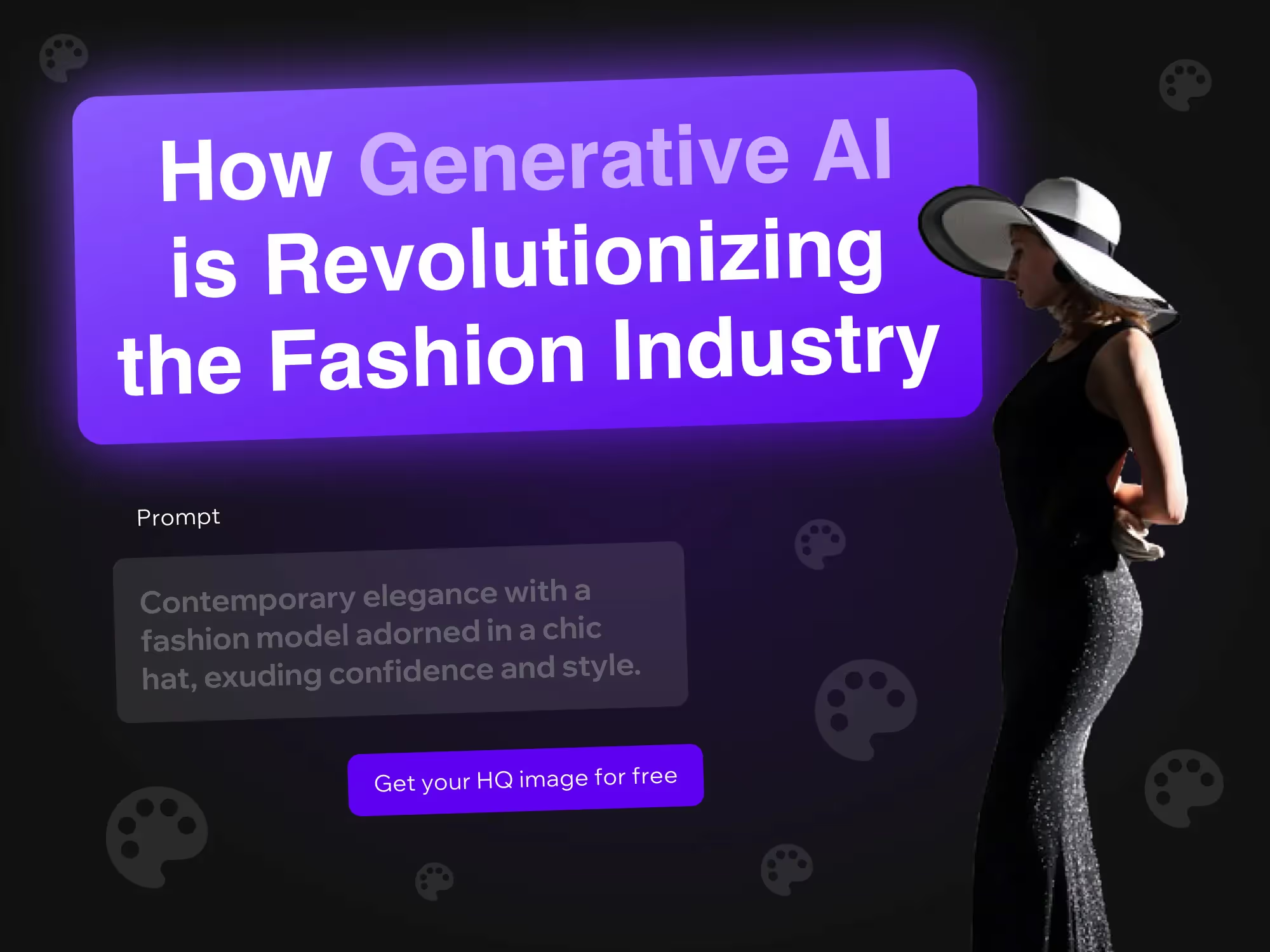Generative AI is revolutionizing the fashion industry from top to bottom.
The world's most innovative brands are already beginning to integrate this new technology into every aspect of the industry, helping reduce costs and better serve customer needs through predictive analytics and image generation.
Designers and fashion houses are using Generative AI to rapidly design new garments and brainstorm new, original ideas. In addition, clothing retailers are also embracing AI as a way to boost efficiency and eliminate waste, while also improving the customer journey through personalized shopping experiences.
In the near future, AI may become a go-to tool in the kit of fashion designers, helping them translate general ideas into eye-catching sketches and prototype designs unlike anything available today.

Consumers will benefit from lower prices and confidence that their purchases are contributing less waste to the environment. They'll also benefit from a more streamlined shopping experience that allows them to find garments that best fit their body type and to try on new clothes using a digital avatar, allowing them to avoid trips to brick-and-mortar stores.
Why the Emergence of AI in Fashion is So Important

The fashion industry has traditionally embraced low-technology processes to produce clothes. These processes included designing garments by hand on a sketchpad and making several variations of a prototype to test on an in-person model before deciding to put a piece into production.
While this type of old-fashioned process helped designers create amazing fashion pieces that stunned consumers, it is also incredibly slow and comes with a hefty price tag. It costs fashion houses and designers a small fortune to create garments by hand and to test each prototype on a real model, painstakingly altering fabrics along the way.
Generative AI is an incredibly disruptive technology that now allows designers to rapidly create and test out new designs using just their computer and vivid imagination. Instead of manually cutting and sewing fabric, AI enables designers to input their general ideas into a program. This software will quickly create and render a detailed design that would have previously taken professional designers days of work to create.

Fashion designers aren’t the only ones taking notice of AI’s potential. Clothing retailers were the first to start integrating AI into their workflow and customer journey. Today, retailers are using AI to:
- Increase production efficiency and reduce logistics costs
- Help customers find the right fit for their body type and try on clothes using a virtual avatar
- Accurately predict demand forecasting and shifting unsold inventory to locations with high product turnover
- Automate product ordering and minimize waste at the end of the season
AI Enhances Personalization and the Customer Experience Journey
AI is not just helping corporations increase the number of products and reduce costs. Fashion houses and retailers are also using AI to enhance the customer experience and eliminate many of the challenges associated with e-commerce and online clothing purchases.
For example, the clothing analytics platform Bodify is leveraging the power of AI to help consumers confidently shop for clothes online, while simultaneously reducing the amount of returns associated with online shopping.

The innovative AI-driven company uses proprietary algorithms to create measurements for popular clothing items at major retailers. Consumers will soon be able to enter their measurements and a picture of themselves into the platform, and it will automatically tell them which items in-store will best fit their body type and proportions.
The company’s platform also provides consumers with a confidence score, which tells them just how well the garment will fit using a number between 1 and 100. The platform’s founder, Carlanda McKinney, says that Bodify helps reduce the number of online returns by more than 30% in early testing.
Understanding the Challenges and Limitations of AI in Fashion

While Generative AI is one of the most popular buzzwords in the industry and is making a real impact on fashion design and the customer experience, the new technology is still in its infancy. Its potential remains limited for now, and brands are wary of integrating unproven technology into customer-facing aspects of their business.
One major challenge is copyright ownership. Many designers are hesitant to fully embrace Generative AI because it remains unclear who exactly owns the design itself. Is it the designer who created the image with the assistance of AI, or is it the creator of the AI program itself?
The answer to this question will have far-ranging impacts, and it is currently in the hands of legal systems around the world.
In addition, some designers and experts worry that the rise of AI in the design process will reduce the need for a human workforce and hinder creativity. A recent Forbes op-ed said “Humans are not very good at knowing when they should delegate decisions to AI. As a consequence, they can end up relying on an AI tool even when it recommends the wrong path.”
The author, Nelson Granados, warned that researchers found “that over-reliance on AI can lead to a decrease in the diversity of thinking, leading to suboptimal collective performance.”
AI Success in the Fashion Industry
Adidas, the global clothing and footwear brand, is one of the most promising success stories in this sector. The company recently used AI to create a futuristic sneaker called Futurecraft.Strung, which combines Generative AI, robotic automation, and 3D printing to create a revolutionary new product.
The company designed this sneaker using AI for both the design and manufacturing process. Skylar Tibbits, founder and co-director of the Self-Assembly Lab, told IEEE Spectrum that “There are really interesting complex geometry problems” for which AI is “pretty well suited.”
The project, which was designed in collaboration with the fashion studio Kram/Weisshaar, uses AI for the design and customization process. Eventually, AI will help the studio “use motion capture of an athlete’s specific gate.”
Looking Ahead
Generative AI is no longer just a buzzword. This revolutionary technology is already making huge inroads into the fashion industry, helping designers, retailers, and e-commerce giants alike create better designs and provide a customized shopping experience for consumers who are desperate to replace the brick-and-mortar shopping experience with a comparable digital experience.
Experts believe that AI will soon be viewed as an integral part of the fashion design process, where designers will use these programs to generate new ideas and rapidly test out innovative designs without the expensive cost associated with human models and hand-stitched prototypes. This will help the industry reduce waste, improve the bottom line, and allow customers to enjoy a personalized shopping experience without ever leaving their homes.








